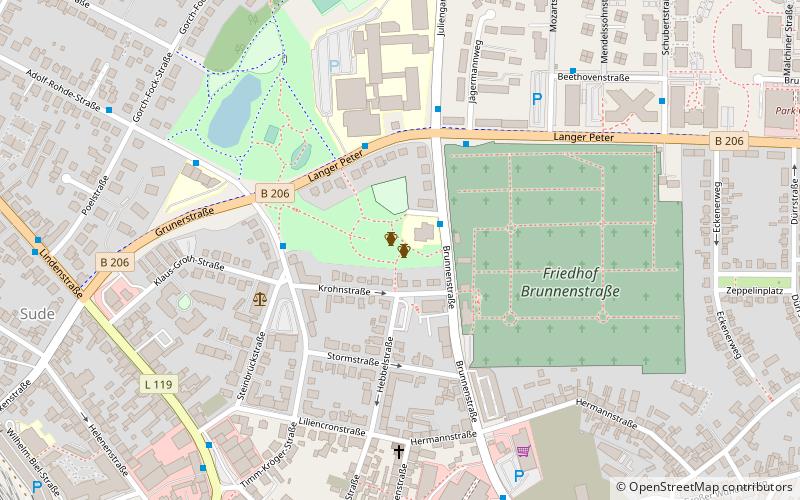Kammer von Warringholz, Itzehoe


Facts and practical information
The chamber of Warringholz district of Steinburg in Schleswig-Holstein, originated between 3600 and 3200 BC as a megalithic site of the Funnel Beaker Culture. The rectangular stone chamber is an enlarged dolmen with originally four supporting stones and four capstones and had been built on a sandy knoll about half a meter high, visible from afar from the adjacent lowland. Its interior measured 3.5 meters in length and 1.2 meters in width. As post-burials of a later period, burials of the single grave culture were found in the chamber.
In the Early Nordic Bronze Age, a tree sarcophagus burial was made next to the dolmen, which subsequently led to a mounding of the entire ensemble with a height of 1.2 meters and a diameter of 25.0 meters. In the eastern part of this burial mound, two urn burials had been additionally inserted in the period V of the Nordic Bronze Age.
Since the farmer wanted to have his field free, the installation was moved on the initiative of Günther Haseloff, who led the scientific investigation in Warringholz in 1938, and set up for display at the Galgenberg in Itzehoe. The arrangement of the stones is based on the original.
Itzehoe
Kammer von Warringholz – popular in the area (distance from the attraction)
Nearby attractions include: St. Laurentii, Schwimmzentrum Itzehoe, Wenzel Hablik Museum, Kreismuseum Prinzeßhof.
Frequently Asked Questions (FAQ)
Which popular attractions are close to Kammer von Warringholz?
How to get to Kammer von Warringholz by public transport?
Bus
- Itzehoe, Berufsbildungszentrum RBZ • Lines: 6180, 755, 785 (3 min walk)
- Itzehoe Dithmarscher Platz • Lines: 14, 6180, 6606, 755, 785 (7 min walk)
Train
- Itzehoe (13 min walk)








